
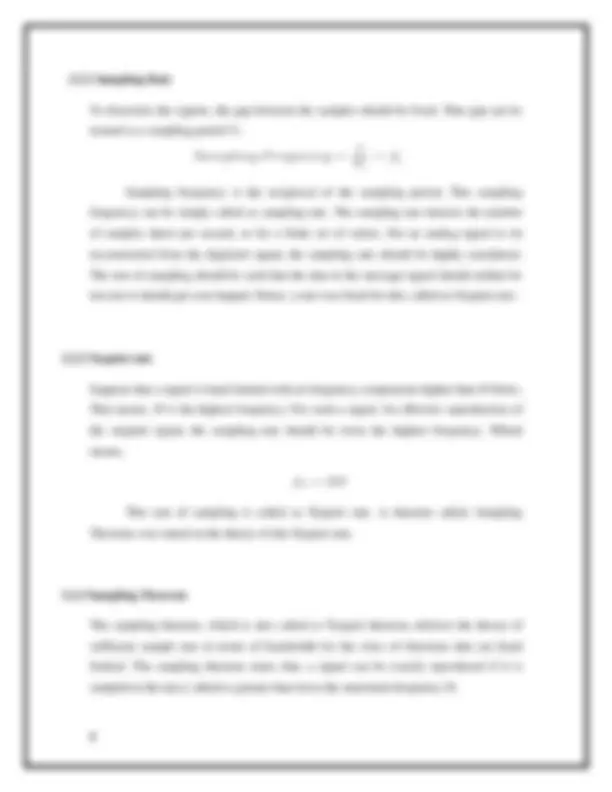
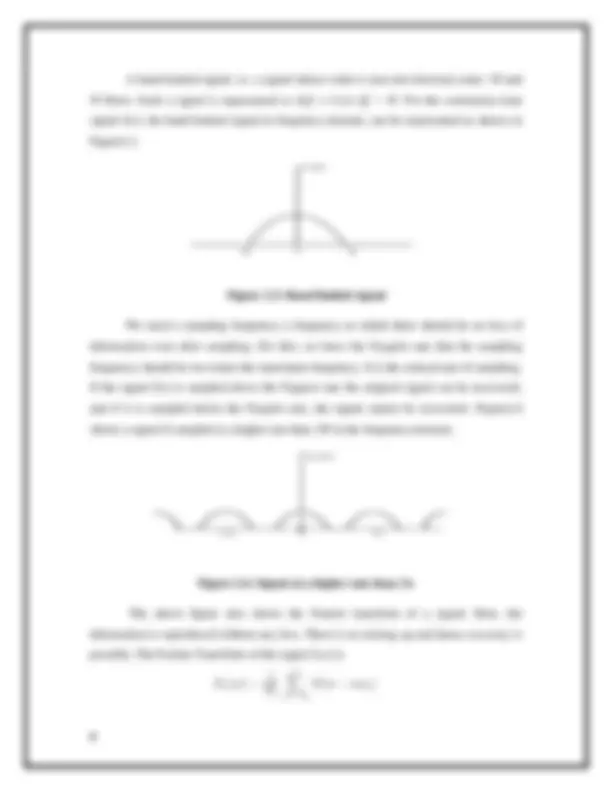
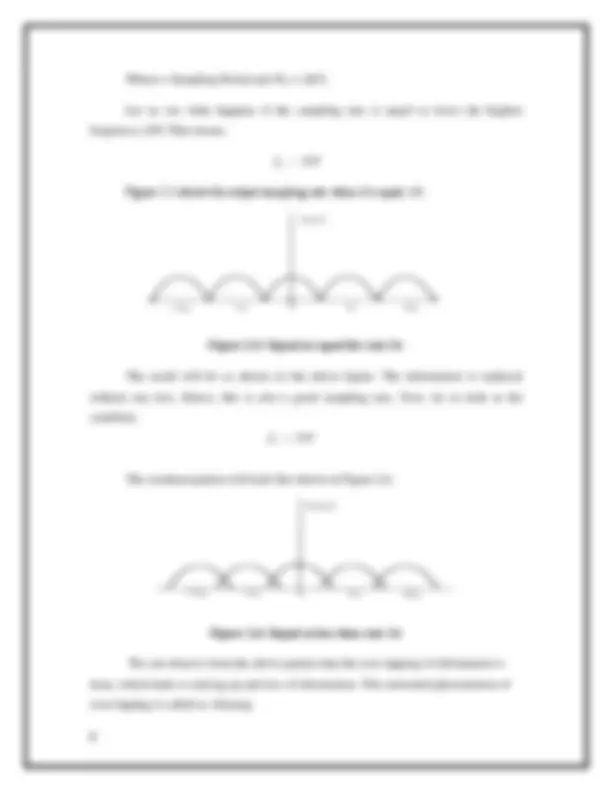
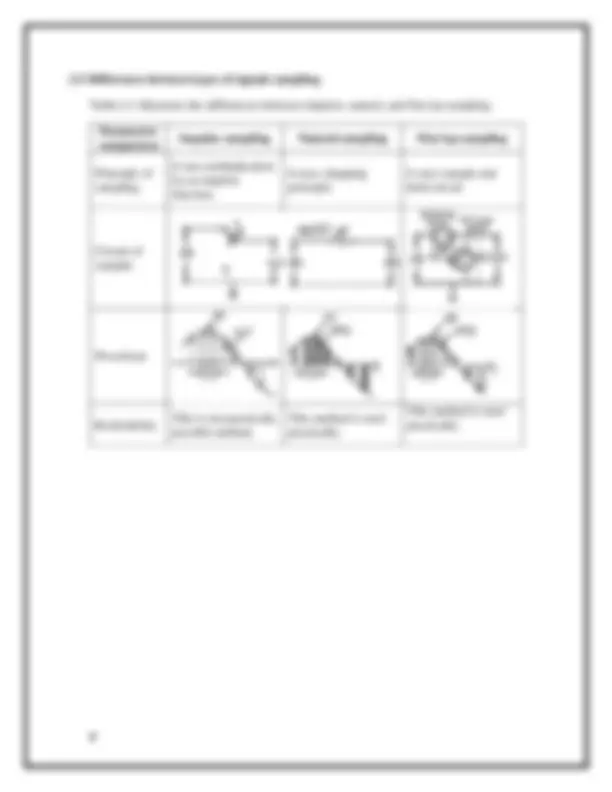
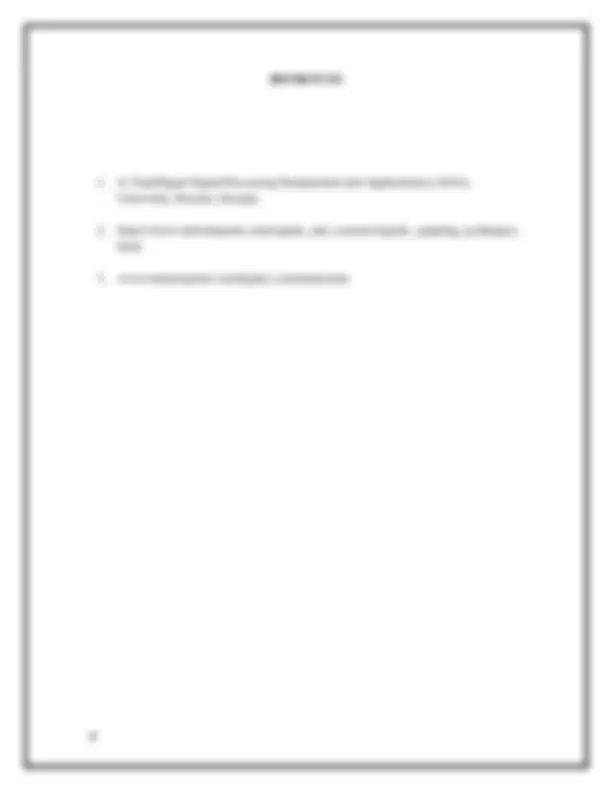


Study with the several resources on Docsity

Earn points by helping other students or get them with a premium plan


Prepare for your exams
Study with the several resources on Docsity

Earn points to download
Earn points by helping other students or get them with a premium plan
Community
Ask the community for help and clear up your study doubts
Discover the best universities in your country according to Docsity users
Free resources
Download our free guides on studying techniques, anxiety management strategies, and thesis advice from Docsity tutors
Digital Signal Process (DSP) system in needing for sampling theorem to convert the signal from analog to digital by using Analog-to-Digital Converter (ADC).
Typology: Summaries
1 / 9

This page cannot be seen from the preview
Don't miss anything!






1.1 Introduction
Digital signal processing (DSP) is one of the most prominent areas in engineering, including subfields such as speech and image processing, statistical data processing, spectral estimation, biomedical applications, and many others. As the name suggests, the goal is to perform various signal processing tasks (e.g., filtering, amplification, and more) in the digital domain where design, verification, and implementation are consider ably simplified compared with analog signal processing. DSP is the basis of many areas of technology, and is one of the most powerful technologies that have shaped science and engineering in the past century. In order to represent and process analog signals on a computer the signals must be sampled with an Analog-to-Digital Converter (ADC) which converts the signal to a sequence of numbers. After processing, the samples are converted back to the analog domain via a Digital-to-Analog Converter (DAC). Consequently, the theory and practice of sampling are at the heart of DSP. Evidently, any technology advances in ADCs and DACs have a huge impact on a vast array of applications.
1.1 Problem Statement
Digital Signal Process (DSP) system in needing for sampling theorem to convert the signal from analog to digital by using Analog-to-Digital Converter (ADC).
1.3 Report Objectives
2.1 Diagram of a digital signal processing (DSP) system
The analog filter processes the analog input to obtain the band-limited signal, which is sent to the Analog-to-Digital Conversion (ADC) unit. The ADC unit samples the analog signal, quantizes the sampled signal, and encodes the quantized signal levels to the digital signal. Figure 2.1 shows a simplified block diagram of DSP.
Figure 2.1: Diagram of Digital Signal Processing (DSP)
2.2 Definition of sampling
Sampling: is the process of measuring the instantaneous values of continuous time signal in a discrete form. Sample: is a piece of data taken from the whole data which is continuous in the time domain. When a source generates an analog signal and if that has to be digitized, having 1s and 0s i.e., High or Low, the signal has to be discretized in time. This discretization of analog signal is called as Sampling. Figure 2.2 indicates a continuous- time signal X(t) and a sampled signal Xs(t). When X(t) is multiplied by a periodic impulse train, the sampled signal Xs (t) is obtained.
Figure 2.2: Continuous time and sampled signal
A band-limited signal, i.e. a signal whose value is non-zero between some – W and W Hertz. Such a signal is represented as X(f) = 0 for |f| > W. For the continuous-time signal X(t) , the band-limited signal in frequency domain, can be represented as shown in Figure2.3.
Figure 2.3: Band limited signal We need a sampling frequency a frequency at which there should be no loss of information even after sampling. For this, we have the Nyquist rate that the sampling frequency should be two times the maximum frequency. It is the critical rate of sampling. If the signal X(t) is sampled above the Nyquist rate the original signal can be recovered, and if it is sampled below the Nyquist rate, the signal cannot be recovered. Figure2. shows a signal if sampled at a higher rate than 2W in the frequency domain.
Figure 2.4: Signal at a higher rate than 2w The above figure also shows the Fourier transform of a signal. Here, the information is reproduced without any loss. There is no mixing up and hence recovery is possible. The Fourier Transform of the signal Xs(t) is
Where = Sampling Period and W 0 = 2π/Ts Let us see what happens if the sampling rate is equal to twice the highest frequency ( 2W ) That means,
Figure 2.5 shows the output sampling rate when it’s equal 2W.
Figure 2.5: Signal at equal the rate 2w The result will be as shown in the above figure. The information is replaced without any loss. Hence, this is also a good sampling rate. Now, let us look at the condition.
The resultant pattern will look like shown in Figure 2.6.
Figure 2.6: Signal at less than rate 2w We can observe from the above pattern that the over-lapping of information is done, which leads to mixing up and loss of information. This unwanted phenomenon of over-lapping is called as Aliasing.
This is called ideal sampling or impulse sampling. You cannot use this practically because pulse width cannot be zero and the generation of impulse train is not possible practically.
2.4.2 Natural Sampling Natural sampling is similar to impulse sampling, except the impulse train is replaced by pulse train of period T. i.e. you multiply input signal X(t) to pulse train Σ∞ n = - ∞ P ( t - nT ) as shown in Figure 2.8.
Figure 2.8: Natural sampling
2.4.3 Flat Top Sampling
During transmission, noise is introduced at top of the transmission pulse which can be easily removed if the pulse is in the form of flat top. Here, the top of the samples are flat i.e. they have constant amplitude. Hence, it is called as flat top sampling or practical sampling. Flat top sampling makes use of sample and hold circuit. Figure 2.9 shows flat top sampling.
Figure 2.9: Flat top sampling
2.5 Differences between types of signals sampling
Table 2.1 illustrates the differences between impulse, natural, and flat top sampling. Parameters comparison Impulse sampling^ Natural sampling^ Flat top sampling Principle of sampling
It uses multiplication by an impulse function.
It uses chopping principle.
It uses sample and hold circuit
Circuit of sampler
Waveform
Realizability This is not practicallypossible method.^ This method is usedpractically.
This method is used practically.